The annals of YouTube gaming history are filled with iconic pairings of creator and game, but few resonate with the chaotic energy and sheer hilarity of PewDiePie and Happy Wheels. For years, Felix Kjellberg’s playthroughs of the ragdoll physics-based web game weren’t just videos; they were events. This article dives deep into the phenomenon, revisiting the series’ origins, exploring what made Happy Wheels so unique, dissecting PewDiePie’s signature comedic style within the game, and celebrating the funniest moments and most epic gameplay highlights that cemented this series as a cornerstone of internet culture. Get ready for a trip down memory lane, filled with screams, laughter, barrels, and questionable life choices made via keyboard controls.
The Beginning: How PewDiePie’s Happy Wheels Journey Started
Before Happy Wheels became synonymous with his channel, PewDiePie was already carving out his niche on YouTube, primarily known for his high-energy horror game playthroughs. His channel was growing, built on a foundation of unfiltered reactions and a close connection with his burgeoning “Bro Army.” The introduction of Happy Wheels into his repertoire marked a significant shift and addition, bringing a different flavor of chaos and comedy that would prove incredibly potent. It wasn’t just another game; it was the start of an era.

Unveiling the First Episode: The February 1, 2012 Debut
The specific moment the Happy Wheels saga began can be pinpointed to February 1, 2012. On this day, PewDiePie uploaded his first video dedicated to the quirky and brutal physics game [Ref 7]. Titled simply “HAPPY WHEELS – PewDiePie,” this initial foray wasn’t necessarily a polished masterpiece but rather a raw, exploratory session. Viewers saw PewDiePie grappling with the controls, reacting with genuine surprise and amusement to the game’s absurd gore and unpredictable physics, and laying the groundwork for what would become a long-running and beloved series. This date marks the official start of a relationship between creator and game that would define a significant part of his channel’s history.
Initial Viewer Reactions and Explosive Popularity Growth
The response was immediate and overwhelmingly positive. Viewers latched onto the combination of Happy Wheels’ inherent absurdity and PewDiePie’s infectious, often hysterical, reactions. The comment sections buzzed with excitement, sharing timestamps of the funniest moments and demanding more. The view counts climbed rapidly, indicating that PewDiePie had struck gold. The series quickly transformed from a one-off experiment into a channel staple. Several factors fueled this explosive growth: the novelty of the game itself, which was unlike mainstream titles; the sheer unpredictability of the physics leading to genuinely surprising moments; and, crucially, PewDiePie’s masterful ability to amplify the humor through his over-the-top commentary and reactions.
To better understand the audience’s initial embrace, consider these common types of reactions:
- Shared Laughter: Comments often focused on how PewDiePie’s laughter was contagious, making even simple fails hilarious.
- Relatability: Viewers enjoyed seeing PewDiePie struggle with the same frustrating levels or react with similar shock to the gore.
- Demand for More: A constant stream of requests for specific levels, characters, or simply “more Happy Wheels” flooded his videos.
- Community Building: The series became a shared experience for the Bro Army, creating inside jokes and memorable moments together. These reactions highlight how the series wasn’t just passively watched but actively engaged with, fostering a strong sense of community around the content.
Why Happy Wheels Perfectly Matched PewDiePie’s Early Channel Vibe
Happy Wheels wasn’t just a random game choice; it was almost tailor-made for PewDiePie’s early YouTube persona. His style at the time was characterized by high volume, rapid-fire jokes, exaggerated facial expressions, and unfiltered, often chaotic, energy. Happy Wheels, with its core mechanics rooted in unpredictable physics, extreme ragdoll gore, and often nonsensical level design, provided the perfect catalyst for these reactions.
Here’s why the synergy was so strong:
- Chaos Breeds Comedy: The game’s tendency for things to go spectacularly wrong at any moment perfectly fueled PewDiePie’s reactive comedy style. A simple jump could turn into a symphony of dismemberment, triggering genuine screams and laughter.
- Low Stakes, High Reactions: Unlike the tension of horror games, Happy Wheels failures were purely comical. This allowed PewDiePie to fully embrace the absurdity without the pressure of jump scares or complex narratives, leading to more lighthearted (though still loud) commentary.
- Visual Humor: The game’s graphic, over-the-top gore and floppy ragdoll physics provided constant visual gags that PewDiePie could easily play off of.
- Facilitated Spontaneity: The unpredictable nature meant PewDiePie couldn’t script his reactions. Every session was fresh, leading to genuine moments of surprise, frustration, and hilarity that felt authentic to viewers.
Compared to his horror game playthroughs like Amnesia, which relied on building tension and reacting to scares, Happy Wheels allowed for a different, more consistently manic and purely comedic energy. It showcased his ability to find humor in frustration and absurdity, a skill that resonated deeply with his audience and helped define his early channel identity. This unique fit is a major reason why the PewDiePie Happy Wheels series became so legendary.
Understanding the Chaos: What Made Happy Wheels Unique?
To fully appreciate why PewDiePie’s videos were so captivating, it helps to understand Happy Wheels itself. Developed by Jim Bonacci, it wasn’t your typical polished indie darling or AAA blockbuster. It was a browser game phenomenon (initially Flash-based) that stood out for its unique blend of physics-based platforming, dark humor, and user-generated content. Understanding its core components – the gameplay, the characters, the community – reveals the fertile ground for comedy that PewDiePie so expertly cultivated. Let’s break down what made Happy Wheels tick.
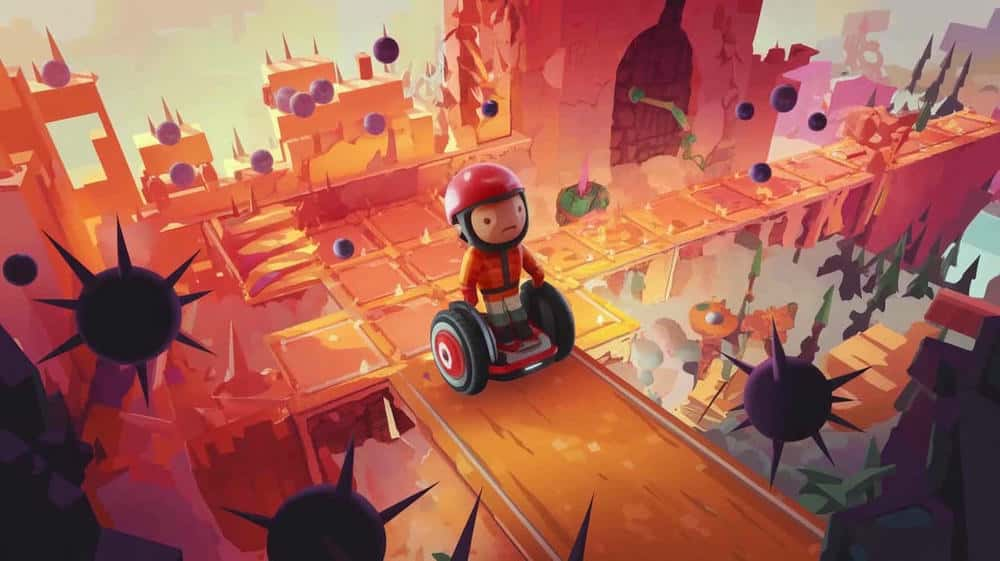
Core Gameplay Explained: Physics, Objectives, and Over-the-Top Gore
At its heart, Happy Wheels is a 2D side-scrolling physics platformer [Ref 2, 6]. The basic goal is usually simple: navigate a character through an obstacle course to reach a finish line, collect certain items, or survive a specific challenge. What makes it unique is how this happens. The game relies heavily on ragdoll physics, meaning characters react realistically (and often brutally) to impacts and forces. Controls can feel intentionally clunky or sensitive, making precise movements difficult. The defining feature, however, is the explicit and often comical gore. Collisions, falls, and traps result in characters losing limbs, bleeding profusely, and generally meeting gruesome ends, all rendered with a cartoonish yet graphic style. This combination of challenging physics, simple objectives, and shocking gore created a playground for unexpected and hilarious outcomes.
Meet the Riders: Iconic Characters and Their Unconventional Vehicles
A huge part of Happy Wheels’ charm lies in its diverse and memorable cast of characters, each paired with a unique and often bizarre mode of transportation. These characters weren’t just cosmetic skins; their different vehicles and abilities fundamentally changed how levels were approached, leading to varied gameplay experiences. PewDiePie often gravitated towards certain characters or reacted uniquely to their specific mechanics.
Let’s introduce some of the most iconic riders featured prominently in PewDiePie Happy Wheels videos. Here’s a quick look at a few fan favorites:
- H4: Segway Guy: Perhaps the most “normal” of the bunch, this character is a man in business attire riding a Segway. His main ability is jumping, but his upright posture makes him prone to spectacular face-plants and tumbles. He often served as a baseline for PewDiePie tackling standard levels.
- H4: Irresponsible Dad: This iconic character features a father riding a bicycle with his young son strapped into a child seat on the back. The key mechanic? The dad can detach from the bike, and the son is extremely vulnerable, often leading to darkly comedic scenarios where PewDiePie would inadvertently (or sometimes purposefully) endanger the child, resulting in memorable reactions.
- H4: Wheelchair Guy: An elderly man in a wheelchair equipped with powerful jets. This character offered high speed and boost capabilities but was difficult to control and prone to launching the rider into oblivion. PewDiePie’s attempts to master the boost often ended in fiery, explosive failure.
- H4: Others: The roster extended further, adding more layers of absurdity. Examples include the Moped Couple (two people on a moped, prone to chaotic separation), Lawnmower Man (a man riding a lawnmower that can mulch obstacles… and himself), and Effective Shopper (a woman in an electric shopping cart filled with groceries).
These varied characters and their unique physics interactions ensured that gameplay never got stale and provided PewDiePie with endless opportunities for specific jokes, running gags, and character-based frustrations or triumphs.
The Power of Community: Exploring User-Generated Levels
Happy Wheels wasn’t just the levels created by the developer; its longevity and variety were massively boosted by its integrated level editor. This powerful tool allowed players to design and share their own intricate, challenging, hilarious, or downright sadistic courses. The community exploded with creativity, churning out hundreds of thousands of levels ranging from simple obstacle courses to complex Rube Goldberg machines of death. This user-generated content was the lifeblood of PewDiePie’s series. He frequently dived into the “Browser Levels” section, playing maps created by fans. These often included direct tributes, featuring his name, catchphrases, or likeness, but just as often, they were “troll maps” specifically designed to frustrate him with hidden traps, impossible jumps, and cruel twists. His reactions to these fan creations, whether delight or rage, became a core part of the show.
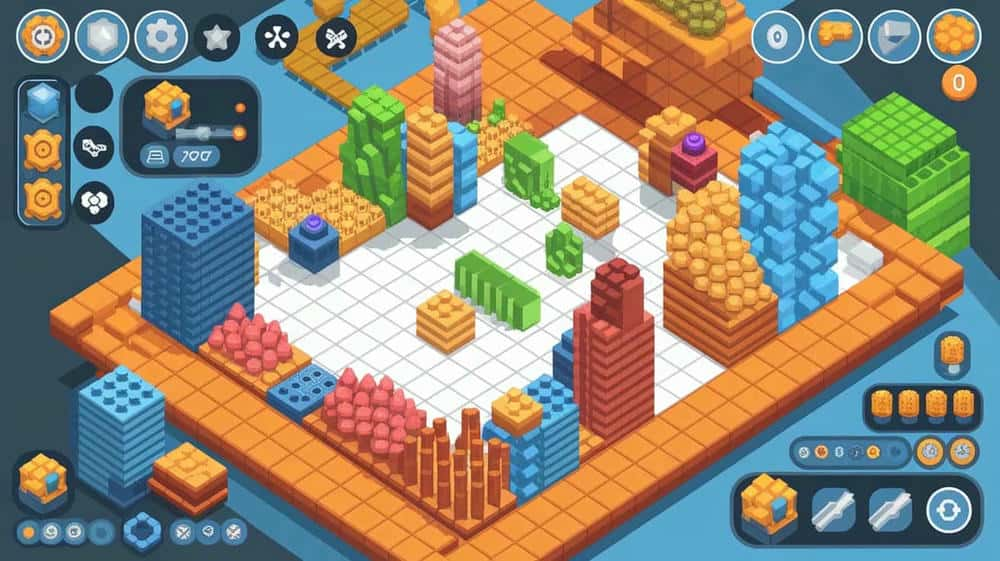
Game Evolution: From Flash Phenomenon to JavaScript and Mobile Access
Happy Wheels began its life as a Flash game, playable directly in web browsers. This accessibility was key to its initial viral spread. However, the impending demise of Adobe Flash Player posed an existential threat to the game. Recognizing this, the developers undertook the significant task of completely rewriting the game’s engine in JavaScript. This transition ensured that Happy Wheels could continue to be played on modern web browsers long after Flash support ended in December 2020 [Ref 10]. Furthermore, the game expanded its reach beyond the desktop. Official versions were released for mobile platforms, bringing the physics-based chaos to iOS via the App Store [Ref 4] and Android via Google Play [Ref 8]. These mobile versions, along with continued (though perhaps less frequent) updates and the robust JavaScript port [Ref 6], have kept Happy Wheels accessible and relevant, allowing new generations to discover the game that PewDiePie helped make famous.
PewDiePie’s Signature Happy Wheels Style: Crafting Comedy from Carnage
Understanding Happy Wheels is one thing, but the magic truly happened when PewDiePie entered the equation. It wasn’t just that he played the game; it was how he played it. His unique blend of commentary, reactions, and engagement with the game’s possibilities transformed simple gameplay footage into comedic gold. His Happy Wheels videos weren’t just Let’s Plays; they were performances, masterclasses in turning digital carnage into entertainment. Let’s dissect the elements that defined his signature style in this series.

Unfiltered Commentary: The Screams, Laughs, and Iconic Reactions
The absolute cornerstone of the PewDiePie Happy Wheels experience was his commentary. It was raw, unfiltered, and incredibly dynamic. He wasn’t calmly narrating his actions; he was living the game’s chaos. When Segway Guy unexpectedly flew headfirst into a wall, PewDiePie wouldn’t just chuckle; he’d often erupt into uncontrollable, wheezing laughter that could last for seconds. When a hidden trap sprung, ending a near-perfect run, the frustration wouldn’t be a quiet sigh; it would be a high-pitched scream of comical agony. These reactions felt genuine and amplified the absurdity of the on-screen events. He’d talk to the characters, yell at the traps, and express bewilderment at the bizarre physics glitches. This constant stream of emotional, often loud, and always entertaining commentary turned passive viewing into a shared experience of shock and amusement. His ability to vocalize the player’s inner monologue of frustration and delight in such an exaggerated way was key to the series’ charm.
Memorable Catchphrases Coined During Gameplay
Through countless hours of navigating treacherous levels and meeting gruesome ends, certain phrases and sounds became recurring motifs, evolving into iconic catchphrases associated specifically with his Happy Wheels playthroughs. These weren’t pre-planned bits; they emerged organically from the gameplay and his spontaneous reactions. Hearing them instantly transports long-time fans back to those moments.
Here are a few memorable examples that became synonymous with the series:
- “BARRELS!”: Often screamed with comical terror or frustration whenever the notoriously difficult-to-navigate barrel obstacles appeared, usually rolling downhill unpredictably. Barrels became a running gag and a symbol of inevitable failure.
- Specific High-Pitched Screams: While screams were common, certain distinct, often escalating, shrieks became instantly recognizable markers of a particularly shocking or frustrating Happy Wheels moment.
- Character Nicknames/Personas: He would sometimes give characters little voices or personalities, talking as them or to them, adding another layer of absurdity (e.g., his interactions with the vulnerable child of Irresponsible Dad).
- “Happy Wheels!” (Sung/Shouted): Often used at the beginning of videos or during moments of peak absurdity, delivered with varying levels of enthusiasm or irony.
- Exaggerated Cries of Pain: Mimicking the characters’ demises with over-the-top groans or whimpers added to the dark humor.
These catchphrases acted as comedic punctuation, reinforcing running gags and creating a unique lexicon understood by his viewers, further solidifying the series’ identity. They became so popular that echoes of them can even be found in fan culture and discussions, sometimes even inspiring designs you might find browsing collections like those on pewdiepiemerch.net.
Navigating Fan-Made Levels: Embracing Tributes and Troll Maps
PewDiePie’s willingness to dive into the vast ocean of user-generated levels was crucial. He didn’t just stick to the official maps; he actively sought out and played levels created by his own fans, the “Bros.” This created a direct feedback loop between creator and community. These fan levels generally fell into two categories:
- Tributes: These levels were often heartfelt (if sometimes clumsily executed) homages to PewDiePie himself. They might feature pixel art of his face, incorporate his catchphrases, reference other games he played, or spell out messages like “Hi Pewds!” using game objects. PewDiePie’s reactions to these were usually appreciative, sometimes amused by the effort or the jankiness.
- Troll Maps: These were the polar opposite. Designed with malicious glee, troll maps aimed to exploit the game’s physics, hide impossible traps, create unavoidable deaths, or simply frustrate the player in the most creative ways possible. PewDiePie’s encounters with these levels often produced the most legendary screams and rage moments, which, paradoxically, were often the most entertaining for viewers. His perseverance (or eventual surrender) in the face of these challenges became a beloved staple.
His engagement with both types of fan levels showed respect for his community’s creativity while also providing an endless stream of unpredictable content that fueled the series’ longevity.
The Art of Failure: Turning Frustration into Entertainment
Perhaps PewDiePie’s greatest talent within the Happy Wheels series was his ability to make failure fun. In many games, constant dying can be tedious for both the player and the viewer. But PewDiePie transformed frustration into a comedic art form. The more he failed, the harder he often laughed (or screamed). The sheer absurdity of the deaths, combined with his over-the-top reactions, made viewers root for him while simultaneously reveling in his comical misfortune. He understood that in a game like Happy Wheels, the journey, filled with bloody missteps and physics-defying blunders, was often more entertaining than reaching the destination. This relatability – everyone knows the feeling of failing repeatedly in a game – combined with his amplified reactions, turned potentially boring moments into highlights. The entertainment wasn’t derived from skillful gameplay, but from the spectacle of failure and the personality reacting to it.
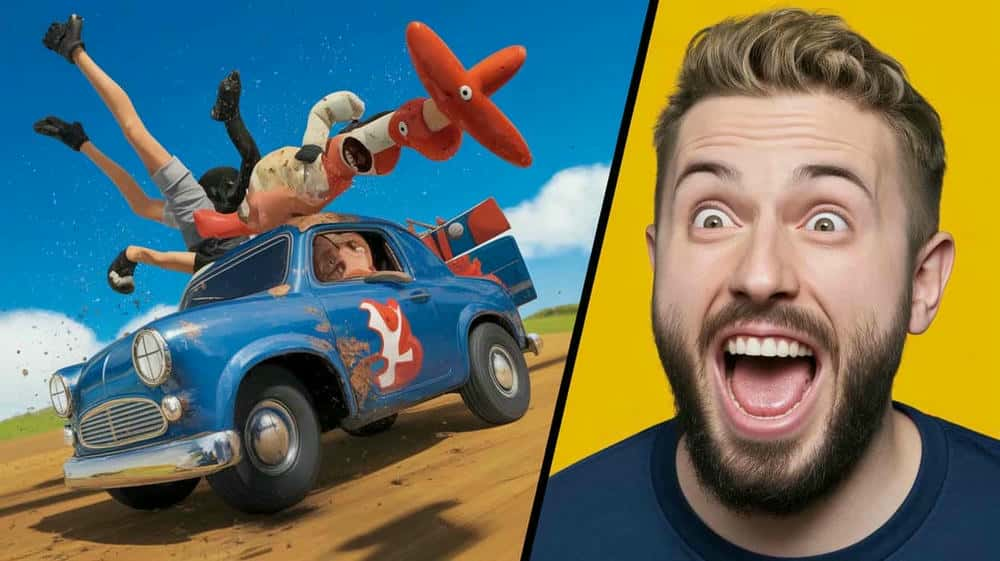
Epic Gameplay & Funniest Moments: The Highlights Reel
Over hundreds of episodes spanning several years, the PewDiePie Happy Wheels series generated an incredible number of memorable moments. From impossible victories snatched from the jaws of defeat to failures so spectacular they induced tears of laughter, certain episodes and gameplay sequences stand out. This section serves as a highlights reel, revisiting some of the most viewed, fan-favorite, and downright iconic moments that defined this legendary YouTube run. Prepare for a nostalgia trip through the best of the best.
Most Viewed & Fan-Favorite Happy Wheels Episodes Ranked
While pinpointing the definitive “best” is subjective, certain episodes resonated more strongly, achieving massive view counts or becoming legendary within the community. Based on view counts and general fan consensus (often referencing the extensive Happy Wheels playlist [Ref 11]), here are a few standout installments often cited as favorites. Identifying these specific moments helps illustrate the peak appeal of the series.
Here’s a look at some frequently celebrated episodes and why they stick in fans’ minds:
- Early Explorations (e.g., Part 1-10): Many fans hold a special place for the very first videos. The raw discovery, the initial shock at the gore, and the establishment of running gags (like hating barrels) make these foundational viewing.
- “IMPOSSIBLE LEVEL?!” Type Episodes: Videos where PewDiePie tackled notoriously difficult fan-made or featured levels often garnered huge attention. His struggles, rage, and eventual triumph (or surrender) were highly engaging narratives.
- Episodes Featuring Specific Characters: Certain videos heavily focused on the antics of characters like Irresponsible Dad or Wheelchair Guy led to unique comedic situations tied to their mechanics, becoming memorable for those specific character moments.
- Compilation Videos: PewDiePie occasionally released montages like “Funniest Happy Wheels Moments,” which condensed the chaos and became highly shareable, often serving as entry points for new viewers.
- Fan-Level Showcases: Episodes dedicated entirely to playing levels submitted by Bros were always popular, strengthening the community connection and often leading to unexpected hilarity or frustration from troll maps.
These examples represent the kinds of content that defined the series’ peak popularity, showcasing the blend of gameplay challenge, comedic reaction, and community interaction.
Unforgettable Character Playthroughs and Strategies (or Lack Thereof)
PewDiePie didn’t just play the characters; he often developed mini-narratives or specific approaches (however flawed) for them. His relationship with certain characters generated unforgettable moments. For instance, his time with Irresponsible Dad was a constant source of dark humor. His desperate attempts to keep the child safe, often immediately followed by accidentally launching the kid into a spike pit, created a cycle of mock-guilt and laughter. He wasn’t employing complex strategies; the comedy came from the lack of strategy and the inevitable, horrific outcomes. Similarly, his use of Segway Guy often involved overly ambitious jumps or attempts to speedrun, usually ending in abrupt, face-first collisions. With Wheelchair Guy, the “strategy” was often just “hold boost and pray,” leading to uncontrollable flights across the map, often completely missing the objective but achieving comedic airtime. These weren’t calculated playthroughs; they were chaotic experiments where the character’s limitations and PewDiePie’s often clumsy control attempts were the entire point.
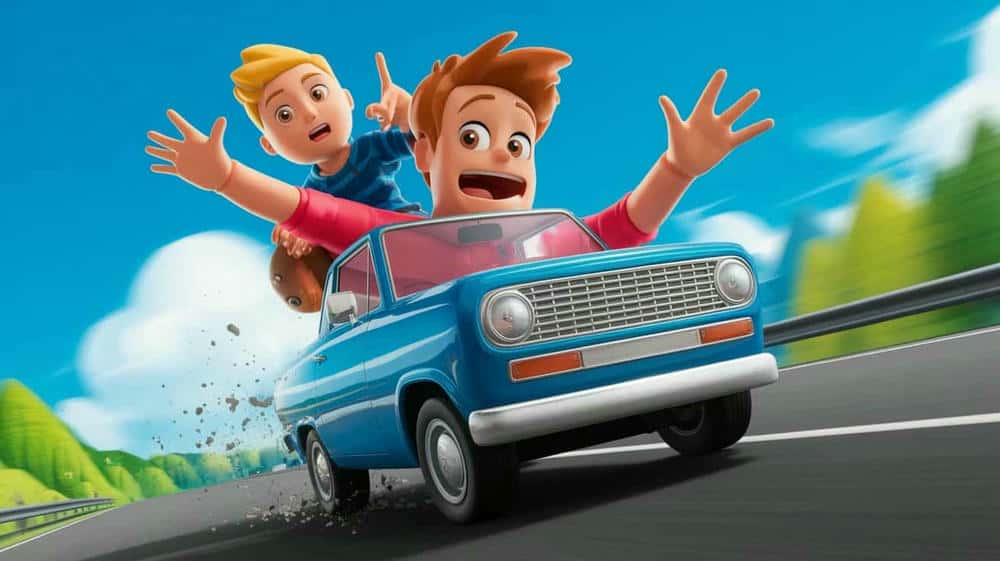
Legendary Fails and Improbable Victories Caught on Camera
The beauty of PewDiePie Happy Wheels lay in its unpredictability. For every ten spectacular failures, there might be one moment of sheer, dumb luck or surprising skill that resulted in an improbable victory. The fails, however, were often the true stars. Legendary fails could involve:
- Elaborate chain reactions where one small mistake led to a cascade of destruction and dismemberment.
- Getting stuck in bizarre geometry glitches, forcing a restart.
- Being killed by seemingly innocuous objects due to wonky physics.
- Falling victim to perfectly hidden, utterly unfair troll traps mere pixels from the finish line.
PewDiePie’s explosive reactions – the screams, the table slams (real or mock), the stunned silence followed by laughter – elevated these fails from simple mistakes to comedic events. Conversely, the improbable victories felt earned, even if achieved by accident. Fluking a landing after flying across the map, accidentally triggering a sequence that cleared the path, or surviving a barrage of traps through sheer luck – these moments were met with triumphant yells and relief, providing a satisfying contrast to the usual carnage. The blend of constant, hilarious failure punctuated by rare, surprising success kept viewers hooked.
Hilarious Glitches and Exploiting Ragdoll Physics for Laughs
Happy Wheels, especially in its earlier Flash iterations and with complex user levels, was prone to glitches. Characters might get stuck in walls, physics objects could behave erratically, or ragdolls might contort into impossible shapes. PewDiePie rarely let these moments pass without comment. He’d often react with bewildered amusement, pointing out the absurdity of the glitch. Sometimes, he’d even try to replicate the glitch or intentionally exploit the ragdoll physics for comedic effect. Deliberately bailing from a vehicle to send the character flying, trying to wedge characters into tight spaces, or simply marveling at the way limbs flailed after an explosion – these interactions showed him actively playing with the game’s systems, not just trying to beat the levels. The glitches and the inherent wonkiness of the physics weren’t just obstacles; they were sources of emergent comedy that PewDiePie expertly mined.
The “PewDiePie Effect”: Boosting Happy Wheels into the Stratosphere
It’s impossible to discuss the history of Happy Wheels without acknowledging the monumental impact PewDiePie had on its popularity. While the game certainly had a following before he started playing it, his videos introduced it to an unprecedentedly massive audience. This section explores the “PewDiePie Effect” – how his coverage transformed Happy Wheels from a cult browser game into a global internet phenomenon.

Quantifying the Impact: Driving Player Growth and Mainstream Awareness
While exact figures might be hard to come by publicly, the correlation between PewDiePie’s Happy Wheels uploads and spikes in public interest is undeniable. His videos, garnering tens of millions of views, acted as enormous advertisements for the game. Search trends for “Happy Wheels” often spiked around the times he uploaded new videos in the series. He exposed the game to legions of viewers, primarily younger demographics, who might never have encountered it otherwise. This led to a massive influx of new players trying the game out for themselves, either on the web or later on mobile. Developers of indie games often speak of the “PewDiePie bump” – a significant increase in sales or player numbers after being featured on his channel. Happy Wheels is arguably one of the most prominent examples of this phenomenon, pushing the game far beyond niche internet circles into mainstream gaming consciousness.
How PewDiePie’s Videos Influenced Game Updates and Community Trends
The relationship wasn’t entirely one-way. The sheer volume of gameplay PewDiePie generated, particularly with user-created levels, likely provided valuable feedback, even if indirectly. Glitches or particularly frustrating level design elements he encountered might have subtly influenced developer priorities for bug fixes or tweaks. More significantly, his playthroughs heavily influenced community trends. Levels that he played and enjoyed (or hated) often became incredibly popular within the game’s level browser. Creators started designing levels specifically for him, hoping to get featured in a video. The types of challenges and humor prevalent in his videos likely inspired other creators, shaping the meta of level design within the Happy Wheels community. His spotlight helped popularize certain level types, characters, and gameplay styles.
Solidifying Happy Wheels’ Place in YouTube Gaming History
The PewDiePie Happy Wheels series did more than just boost the game; it helped shape YouTube gaming culture itself. During a formative period for “Let’s Play” content, PewDiePie’s approach – high energy, reaction-focused, embracing chaos and failure – became incredibly influential. His Happy Wheels videos were prime examples of this style, proving that watching someone react to a game could be just as entertaining, if not more so, than watching skillful play. The series became a benchmark for comedic indie game coverage. It cemented Happy Wheels as a quintessential “YouTuber game” and played a significant role in establishing PewDiePie’s channel identity as a hub for hilarious and often absurd gaming content. Its success paved the way for countless other creators covering similar physics-based or intentionally frustrating games.
Evolution of a Landmark Series within PewDiePie’s Channel
Like any long-running series, PewDiePie’s Happy Wheels content wasn’t static. Over the years, as his channel grew and evolved, so did his approach to the game. From its beginnings as a frequent staple to its later status as a nostalgic favorite, the series mirrored the changes in PewDiePie’s own content creation journey. Understanding this evolution provides insight into both the series’ lifecycle and PewDiePie’s development as a creator.
Tracking Changes in Commentary and Video Production Over the Years
Comparing early PewDiePie Happy Wheels videos (circa 2012-2013) to later installments or nostalgic revisits reveals noticeable shifts. The earliest videos often featured simpler editing, lower quality cameras/microphones, and perhaps even rawer, less self-aware commentary. The energy was frantic, the screams possibly less modulated. As his channel professionalized, the production quality naturally increased – better facecam, clearer audio, potentially more sophisticated editing (though Happy Wheels videos generally retained a fairly raw feel). His commentary style also evolved. While the core energy remained, later videos might show a slightly more mature (though still capable of absurdity) PewDiePie, perhaps with different types of jokes, callbacks to older videos, or a more meta-awareness of his own persona and the series’ history. The fundamental appeal stayed, but the packaging and delivery subtly changed over time.
Upload Frequency: From Channel Staple to Cherished Nostalgic Return
In its heyday, Happy Wheels was one of the pillars of PewDiePie’s channel. New episodes were uploaded frequently, sometimes multiple times a week. Viewers came to expect it as part of his regular content rotation. However, as YouTube trends shifted, as PewDiePie explored new games and formats (vlogs, commentary videos, Minecraft), and perhaps as the initial novelty wore off slightly, the frequency of Happy Wheels uploads gradually decreased. It transitioned from being a daily or weekly staple to a more occasional treat. Later, uploads became even rarer, often framed explicitly as nostalgic returns [Ref 9, 12], events celebrated by long-time fans eager to relive the classic era. This shift reflects the natural lifecycle of a gaming series on a long-running channel.
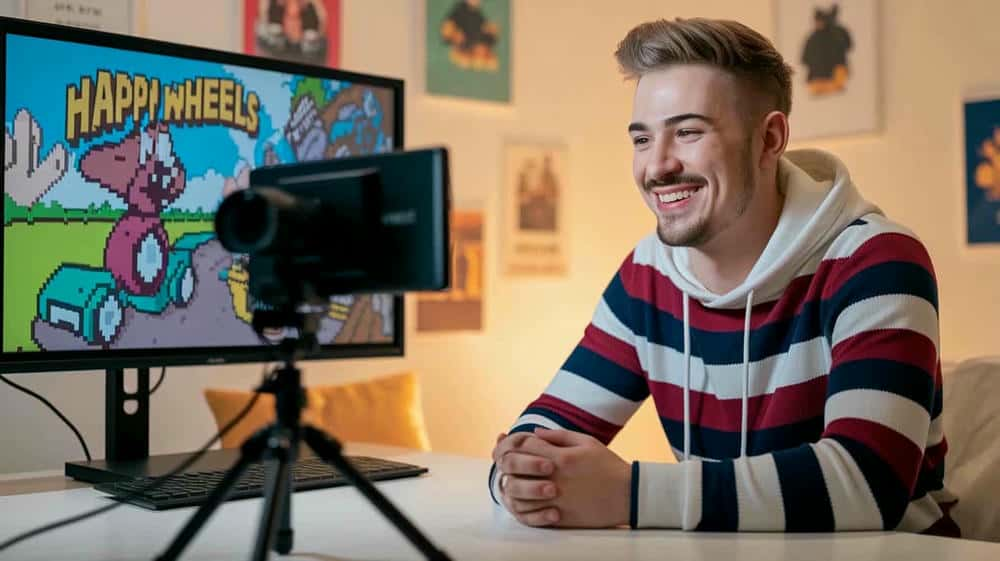
PewDiePie Revisits Happy Wheels: Later Videos and Modern Takes
Even after the main run of the series concluded, PewDiePie occasionally dipped back into Happy Wheels, often prompted by fan requests or his own sense of nostalgia [Ref 9, 12]. These later videos offered a fascinating perspective. He would often comment on how the game felt, acknowledge the memories associated with it, and sometimes react with a mixture of familiar frustration and fond amusement. He might explore new features or levels added since he last played, or simply replay old favorites for the sake of nostalgia. These revisits were met with huge enthusiasm from his audience, demonstrating the series’ enduring appeal. Comparing his reactions in these later videos to his initial playthroughs highlighted his personal growth and the passage of time, while reaffirming the timeless comedic potential of the game itself.
The Enduring Legacy of PewDiePie Playing Happy Wheels
Years after its peak, the PewDiePie Happy Wheels series remains more than just a collection of old videos. It represents a significant chapter in YouTube history, a defining moment for PewDiePie’s channel, and a cultural touchstone for millions of viewers. Its legacy extends beyond view counts, influencing content creation, gaming trends, and fan communities in lasting ways. Let’s summarize the enduring impact of this iconic pairing.
Pioneering the Let’s Play Format on YouTube
While not the originator of Let’s Plays, PewDiePie’s Happy Wheels series was instrumental in popularizing a specific, highly successful style of Let’s Play content. His focus on exaggerated reactions, comedic failure, and high-energy commentary, particularly with chaotic indie or web games, set a template that many others would follow. He demonstrated the immense entertainment value in watching someone experience the pure, unadulterated chaos of games like Happy Wheels, proving that personality and reaction could be just as engaging, if not more so, than polished gameplay or deep analysis. This series helped solidify the viability of reaction-based gaming content on YouTube.
Inspiring Countless Content Creators and Gaming Trends
The staggering success of PewDiePie Happy Wheels inevitably inspired countless other aspiring YouTubers. Seeing his channel explode, partly fueled by this series, encouraged others to try their hand at playing Happy Wheels or similar physics-based, rage-inducing, or simply funny games. The format – facecam, energetic commentary, focus on funny moments – became widespread. Furthermore, it contributed to the popularity of “fail compilations” and the general trend of finding humor in gaming frustration. The series demonstrated a massive audience appetite for this type of content, influencing the kinds of games smaller creators chose to play and the style they adopted.
Why the PewDiePie Happy Wheels Series Remains Beloved by Fans
Even today, the series holds a special place in the hearts of many fans, particularly those who followed PewDiePie during that era. Why does it remain so beloved? Several factors contribute to its lasting appeal.
To summarize the core reasons for its enduring popularity, consider these points:
- Nostalgia: For long-time viewers, the series is inextricably linked to memories of PewDiePie’s early channel and a specific time on the internet. Revisiting it feels like revisiting a cherished part of their own online history.
- Peak Comedic Timing: Many feel this era captured PewDiePie at his comedic peak in terms of raw, reactive humor. The combination of his energy and the game’s absurdity created uniquely hilarious moments.
- Game’s Unique Charm: Happy Wheels itself, with its dark humor, physics, and user creativity, remains a uniquely entertaining game, providing a solid foundation for the comedy.
- Shared Experience: The series fostered a strong sense of community through shared jokes, fan levels, and collective enjoyment of PewDiePie’s triumphs and (more often) failures.
- Authenticity: Despite the exaggeration, PewDiePie’s reactions felt genuine, making the viewing experience more engaging and relatable.
Ultimately, the PewDiePie Happy Wheels series was a perfect storm of the right creator, the right game, and the right time. It wasn’t just about gameplay; it was about personality, chaos, community, and laughter. It’s a series that defined an era for PewDiePie’s channel, significantly boosted a unique indie game, and left an indelible mark on YouTube gaming culture, cementing its place as a truly iconic piece of internet history. Fans looking to celebrate this era might even find nostalgic nods on official creator platforms or fan hubs like pewdiepiemerch.net, showing just how deep the connection runs.
Quick Facts & Common Questions: PewDiePie & Happy Wheels
To round things off, let’s address some frequently asked questions about PewDiePie and his legendary Happy Wheels series for quick answers and clarifications. This section provides concise information on key aspects discussed throughout the article.
Did PewDiePie single-handedly make Happy Wheels famous?
No, but he played a massive role. Happy Wheels already had a cult following as a popular web game before PewDiePie started his series. However, his videos exposed it to an exponentially larger, mainstream audience. His influence undeniably amplified its fame, transforming it from a niche internet curiosity into a globally recognized phenomenon and arguably the most prominent example of the “PewDiePie Effect.”
What is Happy Wheels primarily known for?
Happy Wheels is primarily known for a few key characteristics that define its unique identity:
- Ragdoll Physics: Unpredictable and often brutal physics governing character movement and interaction.
- Graphic & Comedic Gore: Over-the-top, cartoonish violence and dismemberment resulting from failures.
- User-Generated Levels: An extensive library of creative, challenging, and often bizarre levels made by players.
- Unique Characters & Vehicles: A memorable roster of riders with unconventional modes of transport [Ref 2, 6].
What were the main types of Happy Wheels videos PewDiePie created?
PewDiePie’s Happy Wheels content generally fell into several categories, providing variety within the series:
- Standard Gameplay: Playing through popular, featured, or developer-made levels.
- Fan Level Features: Devoting videos to playing levels submitted or created by his viewers (“Bros”), including both tributes and troll maps.
- Specific Challenges: Attempting particularly difficult levels or setting specific goals within the game.
- Character Spotlights: Episodes focusing heavily on the unique mechanics and comedic potential of one or two specific characters.
- Compilations/Montages: Curated collections of the funniest or most epic moments from previous videos.
How did PewDiePie’s Happy Wheels series compare to his horror game playthroughs in terms of style?
While both featured high energy and unfiltered reactions, the style differed significantly. Horror playthroughs (like Amnesia) focused on building tension, reacting to jump scares with screams of terror, and engaging with atmosphere and narrative. The commentary was often punctuated by silence or whispers, broken by sudden frights. Happy Wheels playthroughs, conversely, were about chaotic comedy. Screams were typically out of frustration or absurd amusement, not fear. The commentary was more constant, focusing on the ridiculous physics, gore, and level design. The overall mood was lighthearted mayhem rather than suspense. Both showcased his reactive style, but applied it to different emotional ends.
Is the original Happy Wheels still playable after Flash’s discontinuation?
Yes. While the original Flash version is obsolete due to Flash Player being discontinued, the developers successfully rewrote the game in JavaScript. The official web version of Happy Wheels is available and playable on modern browsers via the official website, ensuring its continued accessibility [Ref 10].
Which platforms currently support Happy Wheels?
Happy Wheels is currently available and officially supported on the following platforms:
- Web Browsers: Playable on the official website (Totaljerkface.com) via JavaScript.
- iOS: Available as an app on the Apple App Store [Ref 4].
- Android: Available as an app on the Google Play Store [Ref 8].
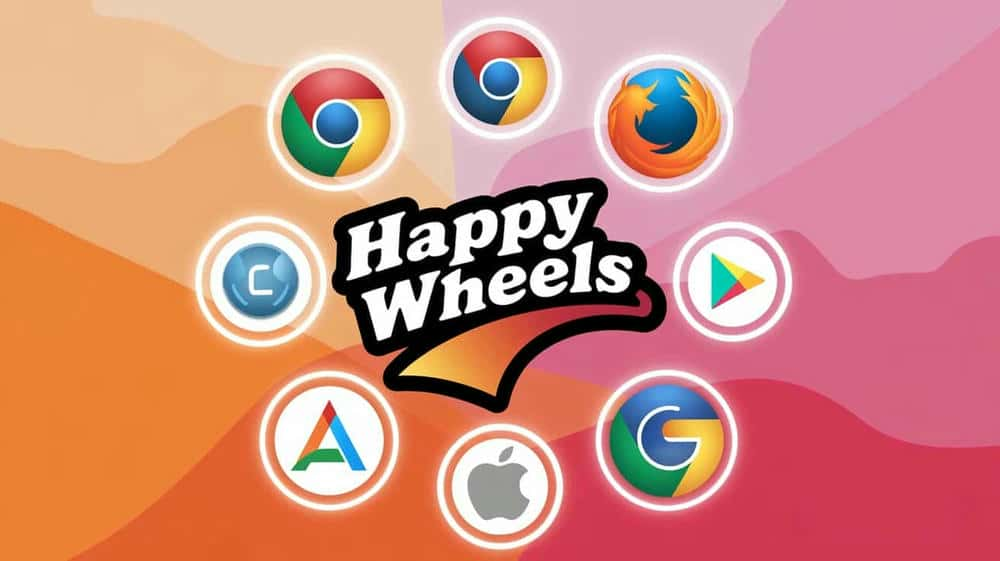

Han Pham is a professional graphic designer with over 15 years of experience in branding, UI/UX, and digital illustration. She graduated from the Ho Chi Minh City University of Fine Arts in 2010 with a Bachelor’s in Graphic Design

